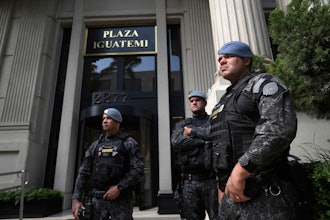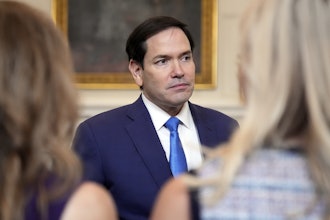LONDON (AP) -- U.K. retail sales rose in October but lending conditions remained tight, suggesting recovery from recession will be slow, official figures showed Thursday.
The 3 percent rise in retail sales was the best figure since August of last year and due largely to a 3.9 percent boost to food sales, the Office for National Statistics said.
Nonfood stores also saw an increase, of 0.9 percent, with textiles, clothing and shoe stores booking a 4.2 percent gain and household goods up 2 percent.
"A year ago customers were extremely nervous about spending. Now consumer confidence is rising and there's a sense that there is some spending out there to be fought over," said Richard Lim, economist at the British Retail Consortium.
However, separate figures showed the flow of credit in the British economy had not yet recovered from the credit crunch and threatened any rebound in growth.
The Bank of England said lending to British businesses shrank by 4.6 percent in September, driving the 12-month growth rate to a record low of minus 6 percent.
Major banks expect subdued demand for new lending through the fourth quarter, the Bank said.
"While some business contacts of the Bank's agents particularly from larger firms outside of the property sectors reported that credit availability had eased, many others continued to report concerns over access to finance," the Bank of England said.
The subdued outlook was underlined by a new report from the Organization for Economic Cooperating and Development, which predicted U.K. economic growth of slightly more than 1 percent next year, "reflecting strong headwinds from balance sheet adjustments, a still weakening labor market and fiscal tightening."
With credit still constricted, the OECD predicted in its semi-annual Economic Outlook that private consumption in Britain would fall by 0.2 percent next year after an expected drop of 2.1 percent in the fourth quarter.
Howard Archer, chief European economist at IHS Global Insight, said that the tight credit conditions, together with high unemployment, low earnings growth, rising debt, and worries about the economy, will weigh against future growth in spending.
"Consumers will also be wary that further out they are very likely to face higher taxes as part of the major corrective action that will be needed to rein in the terrible government finances," Archer said.
In fact, data released Thursday showed government borrowing was 11.4 billion pounds in October, raising net debt to 829.7 billion pounds, equivalent to 59 percent of gross domestic product.
Meanwhile, figures from the Council of Mortgage Lenders were somewhat more encouraging. They showed gross mortgage lending rose to 13.5 billion pounds in October, up 5 percent from September but still 27 percent below a year ago.
Lending for house purchases has risen but re-mortgaging activity is at the lowest level in a decade, the council said.














